#Karl IX
Text

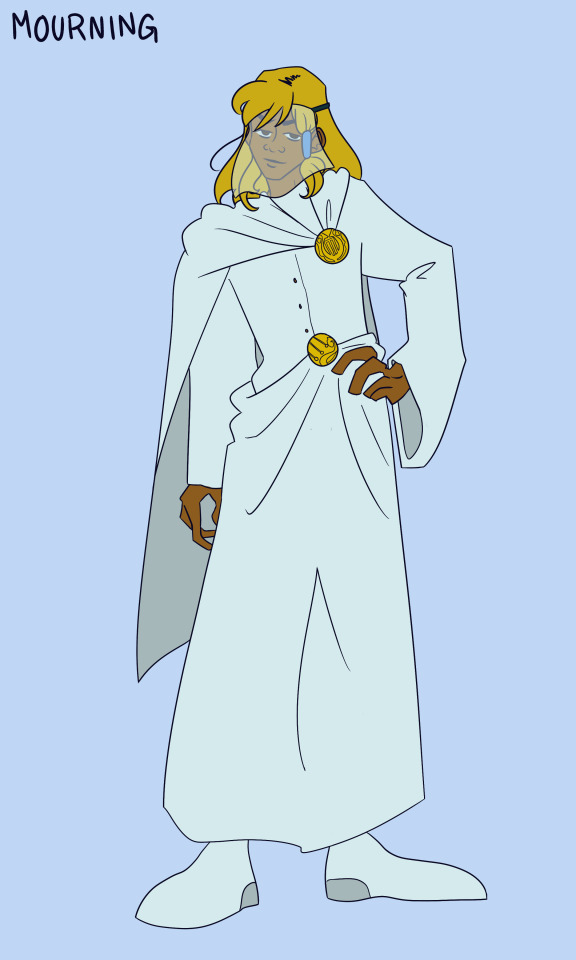

playing around with some different outfits for peony
#tales of the abyss#peony upala malkuth ix#tota#totart#slydiddledeeart#the formal outfit i based off of something karl v wears in one of the bonus mangas#as well as an inverse of the traditional malkuth military uniform--i wanted to make it different#the mourning outfit is based on white as a color of grief and the head piece is meant to be opaque#but i wanted to show it translucent here#that's what he's wearing in my peony/nephry fic! and in. heh. i shant say....#i love dressing him up. my special guy#scion.art
23 notes
·
View notes
Text

King Karl IX's ointment horn flask
The flask was made in 1606 by Swedish-born goldsmith Peter Kiämpe in Stockholm. It is made of gold with relief ornament in multi-coloured enamel and set with ten diamonds, eight rubies and six Karelian garnets.
The idea for the ointment horn flask can be attributed to a verse from the First Book of Kings in the Old Testament: "Zadok the priest took a horn of oil out of the tabernacle, and anointed Solomon."
Photo: royalpalaces.se
#swedish royal family#crown jewels#king karl ix#swedish history#royal history#artefacts#art history#my upload
7 notes
·
View notes
Text
The Purple Sign. Part IX
Self-Aware! Edgar Allan Poe x GN! Reader

Description: There's The Purple Sign on your door. Part IX
Fluff. Poe Pampering
Warning: OOC. English is my second language.
Someone was scratching on your door.
It either could be Karl, Ayatsuji's cats, Natsume in his cat form. Or someone lose a bet.
You opened the door. And saw Karl. Raccoon was holding a Purple Sign in his mouth. Raccoon rubbed against your legs and looked up at you.
You picked up Karl, scratching his chin, before taking The Purple Sign from his mouth.
"What is it, Karl?"
Karl chitters and bumped your hand, which was holding The Purple Sign. You chuckled.
"Do you want to be pampered, Karl?"
Raccoon tilt his head, chittering. He jumped from your arms, rubbed against your legs again, took a few steps away from you and sat down, like he was waiting for something.
"You want me to follow you? Okay."
You walked after Karl. Raccoon was a few steps ahead of you.
Near the staircase, Karl started running, leaving you behind. And you heard footsteps, coming from the lower floor.
Edgar Allan Poe almost ran down the stairs towards Karl and picked him up.
"Karl! There you are! I told you, not to run off! Come on, let's return The Purple Sign back to the library and forget this silly thought of going to Little Raven for..." Poe finally noticed you. He stopped in his tracks. His left eye was visible, and you saw a mix of shock and embarrassment in it.
"I... We..." Poe looked around, trying to escape the embarrassing situation. You took a step forward and raised your hand.
"Edgar, are you okay? Why did you want to go to me?" asked you, looking worried. Edgar, knowing, that you heard enough, explained.
"Nothing serious, I swear. I simply feel burned out." Poe scratch Karl's forehead. Raccoon chittered and rub his head against Poe's palm. "I can deal with this on my own, so, no need to use The Purple Sign. It was a silly idea..." Poe looked away, embarrassed.
You took another step forward, stopping right before Poe. You put your hand on his shoulder.
"Edgar, asking for help, if you feel down, is never a silly idea. I won't laugh or turn you down, if you cane to me. But, it's your decision to make. I won't pry." You carefully put The Purple Sign on Karl's head and turned around and went to your room.
A few moments later, you heard Poe's footsteps behind you.
_____
"It's such a nightmare to publish a book, Little Raven" Poe was half-sitting, half-laying in the bean-bag chair. You listen to him, filling Karl's bowl with cut vegetables. Karl was laying on his own small pillow. Raccoon raised his head, rub it against your legs and start eating his food.
You returned to the emergency shelf, preparing a treat for Poe.
"The deadlines, writing blocks. And don't let me start with the editor." grumbled Poe, trying to change his position to more comfortable. You can't help, but smiles.
"Still bothering you about... having too similar style to Edgar Allan Poe?"
You could feel Edgar's glare on your back even through his bangs. To be fair, Poe's writing style wasn't a problem at all. Yes, when Edgar tried to publish his new book in this world, an editor tried to make him rewrite the book, because the style was too similar to Edgar Allan Poe's style. Yet, Poe insisted, and, after the first book was published and was a successful (EAP still is a beloved and liked author, so, people were fine with reading a good book, written in similar style), the editor stopped to complain about this part. Still, it was tiring for Poe to stand his ground. You turned around, holding a small tray with two tea cups and plate with cupcakes. Poe decided to let your joke slide. It would be terribly poor manners to hiss at you right after you brought such wonderful gifts. Poe took one cup and a cupcake. You sat on the floor before Poe's bean-bag chair, putting the tray between you two.
"No, just bothering me about plot of the story." hummed Poe, taking a bite from the cupcake. You enjoyed your own tea and cupcake in a meantime.
"And, about detective work? Is everything alright over here?" asked you, after the first cupcakes were eaten. Edgar shrugged.
"Nothing much. Police is fine working with us, but, common people still treating us as someone, who will help find evidence on cheating partners."
You hummed, taking another sip of your tea.
You put your cup on the tray and stand up. You carefully walked behind the bean-bag chair and start giving Poe a shoulder rub. Poe leans to your touch. Now, it was time for you to carefully start talking.
"Don't pay attention to them. Not to nosy editor, or clients with simple problems... Or to reviews, that call you an Edgar Allan Poe expy." Poe became still. His voice sounded dull.
"You saw them." it wasn't a question.
"Yes. You can't blame me, I am happy to see you becoming successful." you take a few steps, to stand before Poe, take his hands, massaging them. "Edgar, you are your own person, you don't share anything with your namesake, besides the name. I won't think about you or your books less, just because of the similar style. You are your own person and my friend. And I will fight anyone, who say otherwise"
Poe was silent. You run your fingers through his hair, removing strands from his eyes. The gaze of violet eyes were full of gratitude.
"Heh... Thank you, Little Raven, I needed that." Suddenly, his gaze became playful. "Still, I insist, that you decide to became my friend because of my name. So, swords or guns?" Poe grinned. You scoff.
"Okay, brace yourself."
____
You and Poe played a few rounds of Cluedo, Mysterium and Chronicles Of Crime. Poe won most of the time, but, you also have your fair share of winning.
Poe won the last round. He looked pleased.
"I must confess something, [Y/N]. Comments about Expy are just annoying at that point, they don't get under my skin." Poe put game cards back in the box. "But, I do appreciate your words. I always need them."
You hummed and open your arms.
"So, want a hug for a full experience?"
Poe laughed and crushed you against his chest. He pecked your cheek.
"My cuddly Little Raven, thanks for being such a gem."
You huffed, burying your face in Poe's shoulder.
"Want to stay some more? We can watch something, or..."
Karl ran between you two, loudly chittering, trying to get your attention.
Poe picked up Karl.
"Or we can take care of Karl. He deserved some treats."
Then you two spent time grooming Karl's fur. Raccoon chittered happily, rubbing his head against your and Poe's arms.
After dinner, you turned on a documentary about raccoons on your laptop. You and Poe watched it together, sitting on your bed near each other. Karl curled in your legs.
You three fall asleep in the middle of the movie. Through sleep, you felt, how Poe nuzzle his face in the back of your neck, leaving few pecks and whispered.
"Thank you, [Y/N]..."
You two fall asleep with smiles on your faces.
#self-awarebsd#self-awareau#bungou stray dogs au#bsd#bungou stray dogs#bsd anime#bsd x gender neutral reader#gender neutral reader#edgar allen poe bsd#edgar allan poe x reader#poe x reader#Self-Aware Edgar Allan Poe
110 notes
·
View notes
Photo










1055. Harry Seidler /// Dusseldorp Ski Lodge /// Thredbo, New South Wales, Australia /// 1962-63
OfHouses presents Heroes, part IX: Harry Seidler.
(Photos: © Max Dupain. Source: Mitchell Library, State Library of New South Wales; Harry Seidler, Chris Abel, ‘Houses and Interiors, Vol. 1’, Mulgrave: The Images Publishing Group, 2003; Karl Kaspar, ‘Holiday Houses’ , London: Thames & Hudson, 1967.)
#Heroes#Harry Seidler#harryseidler#australia#60s#OfHouses#oldforgottenhouses#www.ofhouses.com#thecollectionofhouses
127 notes
·
View notes
Text
Venus signs as supermodels
Aries

Paulina Porizkova (19°): signed the most lucrative partnership in 1988, a $6 million deal with Estee Lauder for seven years, the first Central European woman to appear on the cover of the Sports Illustrated swimsuit issue
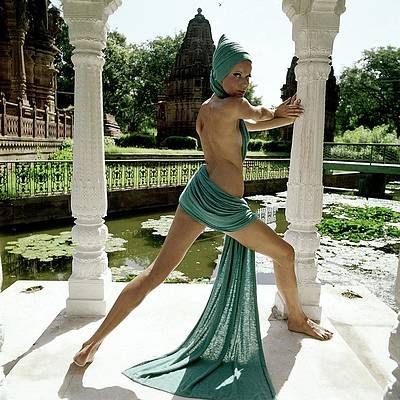
Vera Lehndorff (22°): known professionally as Veruschka, she is considered the "first German supermodel.

Alek Wek (10° R): began her modeling career in the mid-1990's, she became one of the most successful black model in the industry. She has been hailed for her influence on the perception of beauty in the fashion industry.
Taurus

Linda Evangelista (27°): been featured on over 700 magazine covers, Evangelista is primarily known for being the longtime "muse" of photographer Steven Meisel, as well as for the phrase: "We don't wake up for less than $10,000 a day." Described as the "chameleon" of the fashion industry, she was part of the "Trinity". Known by her nickname "The Linda".
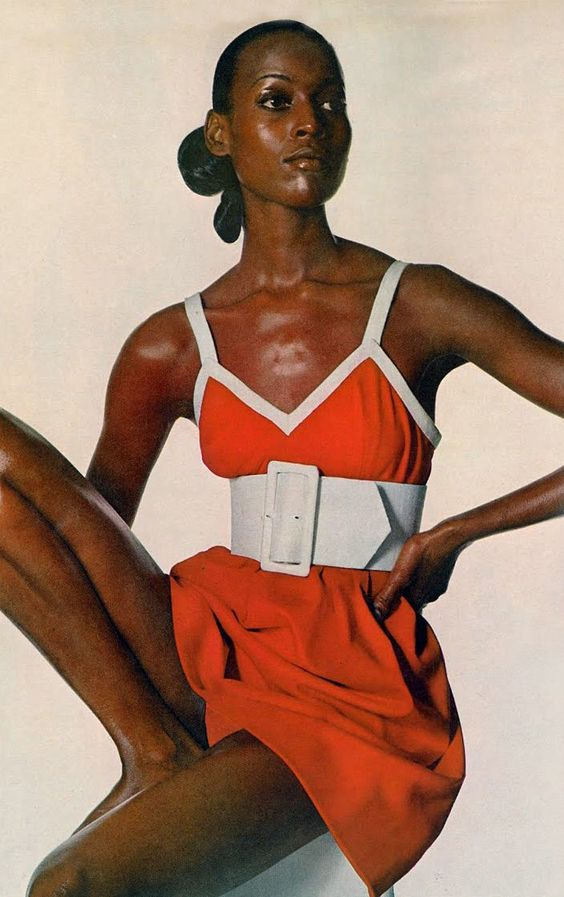
Naomi Sims (25° R): was the first African-American model to appear on the cover of Ladies' Home Journal, which occurred in November 1968, and is widely credited as being the first African-American supermodel.
Other supermodels: Carmen Dell'Orefice (16°), Jessica Stam (25°)
Gemini

Naomi Campbell (29°, V House): sleek, tall, chic, one of the reigning queens of jet-set supermodels, the first black female model to make the covers of both the British and French Vogue. She was part of the Trinity which also included Christy Turlington and Linda Evangelista.

Giselle Bündchen (19°, VI House): since 2001, she has been one of the highest-paid models in the world. Vogue credited her with ending the heroin chic era of modelling in 1999. In 2007, Claudia Schiffer called Bündchen the only remaining supermodel. She has appeared on more than 1,200 magazine covers.
Other supermodels: Joan Smalls (14°), Kimora Lee Simmons (24°), Heidi Klum (24°), Laetitia Casta (17°, IX House)
Cancer

Iman (7°): muse of the designers Gianni Versace, Thierry Mugler, Calvin Klein, Donna Karan and Yves Saint Laurent (who described her as "the dream woman").

Lisa Fonssagrives (4°): is widely credited with having been the first supermodel. She was reported as "the highest paid, highest praised, high fashion model in the business".
Other supermodels: Jourdan Dunn (16°, II House), Devon Aoki (25°)
Leo
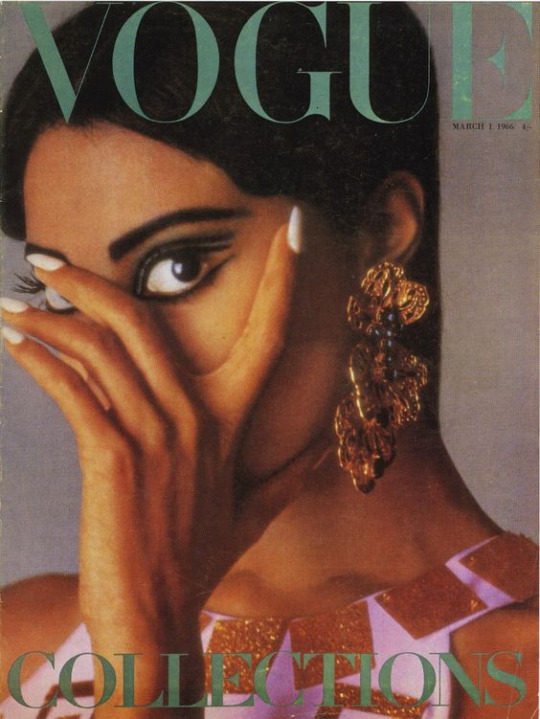
Donyale Luna (1°): the world’s first black supermodel; when she was 20 years old, Time magazine named 1966 as “The Luna Year,” describing the model as “a new heavenly body who, because of her striking singularity, promises to remain on high for many a season.”
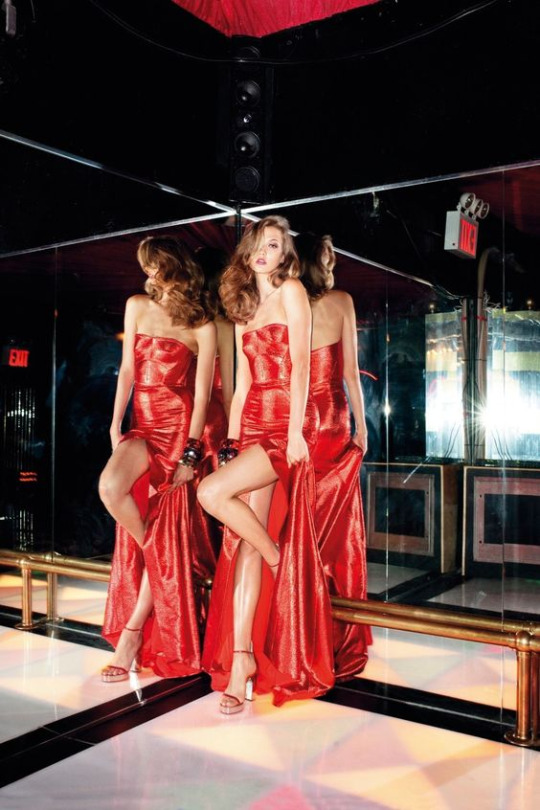
Karlie Kloss (25°, II House): Models.com has said that Kloss "represents the gold standard of modeling—a girl with the look, the poise, and the drive to take things to the next level", and she ranks on their "New Supers" and "Money Girl" lists. By 2019, she had appeared on 40 international Vogue covers.
Other supermodels: Anja Rubik (6°, VIII House), Stephanie Seymour (9°, XII House), Coco Rocha (3°)
Virgo

Ines de la Fressange (19°, IV House): the first model who had an exclusive contract with a fashion house, Chanel. After her decision to accept the deal with the French government to be a model for the national symbol of Marianne, she had an argument with her mentor at Chanel, Karl Lagerfeld who considered her his muse. She terminated the relationship with the fashion house and has gone on to design for Gaultier.

Bella Hadid (6°, XII House): she began her modeling career in 2014 and walked in major fashion show for designers such as Chanel, Dior, and Marc Jacobs.
Libra

Lauren Hutton (8°, III House): signed a modeling contract with Revlon in 1973, which at the time was the biggest contract in the history of the modeling industry

Claudia Schiffer (17°, XI House): became the face of Guess, which gave her mainstream recognition. “In order to become a supermodel one must be on all the covers all over the world at the same time so that people can recognize the girls,” she once said. Appearing on more than 1,000 covers over the span of her career, Schiffer is listed in the Guinness Book of World Records as the model with the most magazine covers.

Beverly Peele (9° R): rose to fame in the late 1980s and 1990s, as a supermodel, appearing mostly in Mademoiselle and Elle magazine. She appeared on over 250 fashion magazine covers including Vogue and Harpers Bazar.
Scorpio

Twiggy (5°, IV House): with her expressive doe eyes, she was crowned “The Face of 1966,” voted British Woman of the Year, and found immediate fame all over the world.
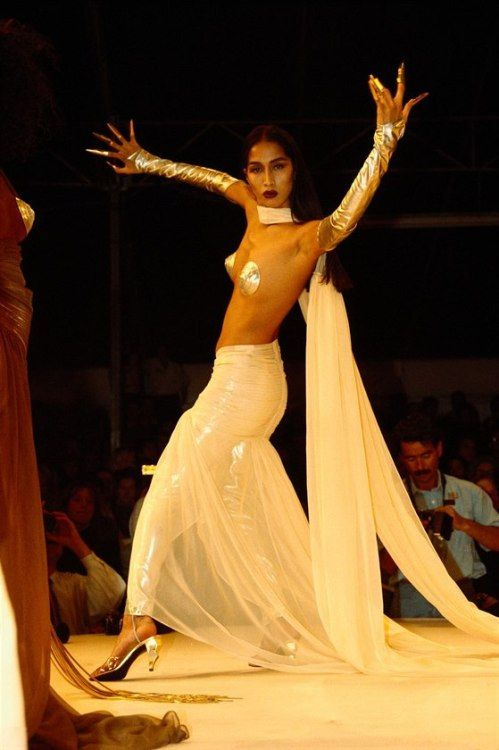
Anna Bayle (13°): became one of highest paid models in the late 70's. She has been described as being one of the first Asian supermodels (she's filipino). Bayle became known for her unique runway walk, which The New York Times described "as if she were crushing a cigarette butt with each step down the runway".
Other supermodels: Carla Bruni (19°, V House), Kristen McMenamy (23°), Milla Jovovich (12°, V House), Beverly Johnson (19°), Jean Shrimpton (10°, XII House)
Sagittarius

Kendall Jenner (0°, VIII House): her status as a supermodel is controversial. Jenner made her debut at No. 16 on Forbes magazine's 2015 list of top-earning models, with an estimated annual income of US$4 million. In 2017, Jenner was named the world's highest-paid model by Forbes, ousting model Gisele Bündchen, who had been leading the list for more than 14 years since 2002.
Capricorn

Tyra Banks (27°, VII House): the first black model to appear on the cover of a "Sports Illustrated" swimsuit issue and the first black woman to be featured on the cover of the "Victoria's Secret" catalog.

Cindy Crawford (28°, VII House): known for her trademark mole just above her lip. Her girl-next-door aesthetic was so in demand, she fronted nearly every campaign imaginable, from Calvin Klein to Pepsi.
Other supermodels: Amber Valletta (26° R), Irina Shayk (12°), Shalom Harlow (28°)
Aquarius

Barbara Goalen (23°, XI House): is considered the first British supermodel. With her striking features and wasp-waisted frame, she epitomised post-war glamour and modelled for both Dior and Balenciaga.

Kate Moss (7° R): rose to fame in the eary 90's as part of the heroin chic fashion trend. She is known for her waifish figure and role in side zero faschion. She has inspired cultural depiction including a 18 carat gold statue of her, sculpted in 2008 for a British Museum exhibition. She was part of the 'Big 6' together with Naomi Campbell, Christy Turlington, Linda Evangelista, Cindy Crawford, and Claudia Schiffer.
Other supermodels: Christy Turlington (27°, II House), Tatjana Patitz (18°), Yasmeen Ghauri (23°), Helena Christensen (17°, IV House), FeiFei Sun (21°)
Pisces

Liu Wen (14°): in 2012, The New York Times dubbed her "China’s first bona fide supermodel". She is the first Chinese model to walk the Victoria's Secret Fashion Show, the first East Asian spokesmodel for Estée Lauder cosmetics, and the first Asian model to ever make Forbes magazine's annual highest-paid models list, the first to be featured on the front cover of Vogue, the first person of Chinese descent to appear three times on Vogue.
#aries venus#taurus venus#gemini venus#cancer venus#leo venus#virgo venus#libra venus#scorpio venus#sagittarius venus#capricorn venus#aquarius sun#pisces venus#fashion
155 notes
·
View notes
Text
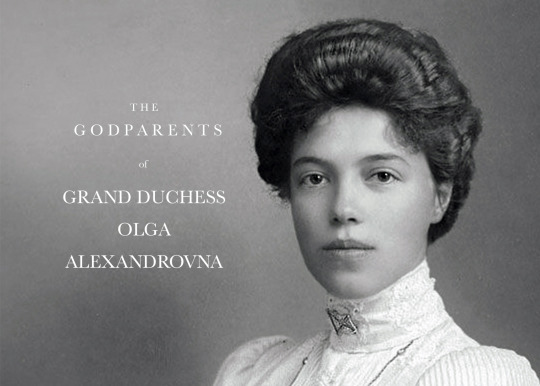

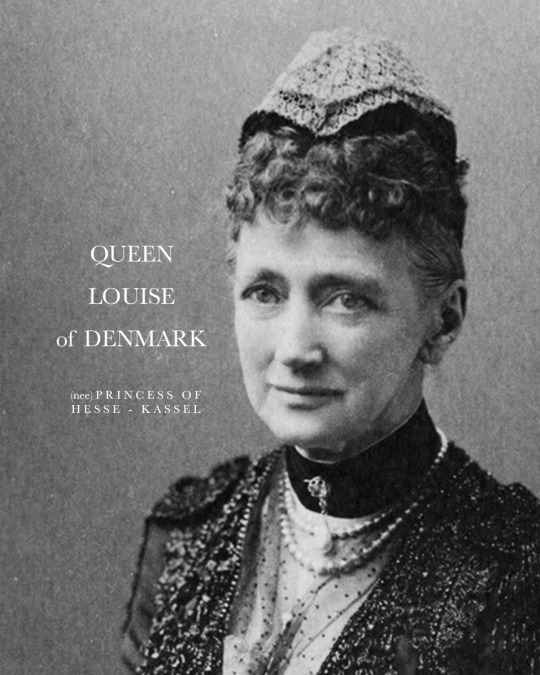



GODPARENTS OF GRAND DUCHESS OLGA ALEXANDROVNA
Grand Duchess Olga Alexandrovna, the youngest daughter of Emperor Alexander III of Russia, was born on 13 June 1882 at Peterhof Palace in Saint, Petersburg, Russia. She was christened on 23 July (Saint Olga's Day) in the Grand Palace Church, Peterhof by the Confessor of Their Imperial Majesties archpriest Bazhanov. Her godparents as listed:
KING CHRISTIAN IX OF DENMARK - her maternal grandfather, the Danish King was among her godparents. His initial unpopularity at the start of his reign, and the many years of political strife, where the king was in conflict with large parts of the population, his popularity recovered towards the end of his reign, and he eventually became a national icon due to the length of his reign. He was absent at the christening of his Russian grandchild.
PRINCESS LOUISE OF HESSE-KASSEL, QUEEN CONSORT OF DENMARK - his maternal grandmother was another of her godparents. Louise became the Queen consort of Denmark upon her husband’s - King Christian IX - accession in 1863. Through her six children, she was a grandmother of not only the future Tsar of Russia (Nicholas II, Olga's eldest brother), but also that of King George V of the United Kingdom; King Constantine I of Greece; King Christian X of Denmark, and King Harken VII of Norway. Like her husband, Louise was also absent at the christening.
GRAND DUCHESS OLGA NIKOLAEVNA OF RUSSIA, QUEEN CONSORT OF WÜRTTEMBERG - her great-aunt was one of her godparents. She was the younger sister of her late grandfather, Alexander II. Attractive, cultured and intelligent, she had been considered to be one of the most eligible princesses in Europe. In 1846, she married Crown Prince Karl of Württemberg. She was absent at the christening of her namesake.
GRAND DUCHESS OLGA KONSTANTINOVNA OF RUSSIA, QUEEN CONSORT OF GREECE - her aunt and namesake was named as one of her godparents. Olga Konstantinovna was the first cousin of her father Alexander III, being the eldest daughter of Grand Duke Konstantin Nikolaevich of Russia. At 16, she married King George I of Greece, the brother of her mother Maria Feodorovna. Queen Olga was a popular figure in Russia, and in Greece. She was present at the christening.
GRAND DUKE ALEXEI ALEXANDROVICH OF RUSSIA - her uncle was another listed godparent of the young grand duchess. A naval officer for most of his life, he had a significant contribution in the equipment of the Russian navy with new ships and in modernizing the naval ports. He was present at the christening of his niece.
Source
30 notes
·
View notes
Text
Whatever the opposite of a writer’s block is, I have it and now I want to write like nobody’s business. So! Those who come across this, feel free to throw me a request!
Key -
Type of writing
Oneshot 🌻, Word Vomit 🌿, Poem 🍂, Analysis 🥀
How the character is related to the work
Perspective character 🌕, Main Character 🌖, Central Side Character 🌗, Peripheral Side Character 🌘, Mentioned Character 🌑
I will write prompts including:
Rings of Power
- Young Galadriel
- Young Sauron
- Young Elrond
- Durin
- Disa
- Young Gandalf
- Nori Brandyfoot
- Arondir
- Bronwyn
The Hobbit
- Thorin Oakenshield
Voice like a drum, love like a melody 🌻🌖
- Bilbo Baggins
Voice like a drum, love like a melody🌻🌕
- Gandalf the Grey
- Any members of the company, just may need to do some extra research and it will be delayed a tad
-Thranduil
-Bard the Bowman
Lord of the Rings
-Gandalf the White
- Aragorn
- Legolas Greenleaf
- Gimli
- Frodo Baggins
- Samwise Gamgee
- Pippin Took
- Merry Brandybuck
- Boromir
- Faramir
- Eowyn
- Eomer
- Theoden
Dream SMP
- C!Tommy
A Lighthouse and a Void 🥀🌑
- C!Tubbo
A Lighthouse and a Void 🥀🌖
- C!Philza
A Lighthouse and a Void 🥀🌑
- C!Karl
Flame🍂🌑
- C!Ranboo
A Lighthouse and a Void🥀🌖
- C!Technoblade
- C!Quackity
Flame🍂🌖
- C!Charlie
Flame🍂🌗
-C!Fundy
In and Out (Of Sync)🌿🌕
-C!Wilbur (I will not write about him again, but I am proud of the work I have done with him)
Life Before You🌿🌕
Flame🍂🌗
In and Out (Of Sync)🌿🌑
If asked, I can also talk about my oc’s:
Searing, Scorching, Blistering
Modern Fantasy
Wherein two brothers attempting to lay low from their oppressive colonizers get swept into a underground society consisting of heists, blackmailing, and corruption. As they navigate their relationship with each other and themselves, could they learn to trust again?
- Wiljem
An Introduction to my Searing, Scorching, Blistering original characters 🥀🌖
- Taher
An Introduction to my Searing, Scorching, Blistering original characters 🥀🌖
- Liizesk
An Introduction to my Searing, Scorching, Blistering original characters 🥀🌖
- Rahn
An Introduction to my Searing, Scorching, Blistering original characters 🥀🌖
- Aire
An Introduction to my Searing, Scorching, Blistering original characters 🥀🌖
- Jeb
An Introduction to my Searing, Scorching, Blistering original characters 🥀🌖
- Tirakem
An Introduction to my Searing, Scorching, Blistering original characters 🥀🌖
Apprentices!
Semi-Satire Fantasy
In a world long after the dark lord evil thing gets destroyed, it is a rite of passage to go on a journey to mark the end of their apprenticeship, mirroring the tales of old. But, is there any real quests left? 5 apprentices and their resident exhausted chaperone expect nothing when they set out on a simple transportation mission. However, there is something deeper brewing within their adventure.
- Aminah
- Ikal
- Ruaridh
- Xhemal
- Dumi
- Aglaia
- Linh
- Yati
- Iustus
- Folayan
- Ailean
- Ix Kaknab
- Phiesak
#the hobbit#the hobbit fandom#the hobbit bilbo#the hobbit thorin#the hobbit gandalf#the hobbit company#lotr#lotr frodo#writing#fanfic#requests#dsmp lore#dreamsmp#dsmp las nevadas#ocs#my ocs
5 notes
·
View notes
Text
With the infamous words, "Somehow, Palpatine returned," the end of the third Star Wars trilogy premiered on December 20, 2019. There had been plans to focus on Han in the first movie, Luke in the second, and Leia the third, but the death of Carrie Fisher changed those plans. Producers decided to inlcude her primarily through using unused footage. To help with the nastalgia for the original trilogy Billy Dee Williams returned as Lando Calrissian, Mark Hamill as Luke Skywalker, Anthony Daniels as C-3PO, Ian McDiarmid as Emperor Palpatine, Harrison Ford as Han Solo, Mike Quinn and Kipsang Rotich as Nien Nunb, Warwick Davis as Wicket, Joonas Suotamo as Chewbacca, Denis Lawson as Wedge Antilles and R2-D2. Returning from the new trilogy were Adam Driver (Kylo Ren), Daisy Ridley (Rey), John Boyega (Finn), Oscar Isaac (Poe Dameron), Domhall Gleeson (General Hux), Lupita Nyong'o (Maz Kanata), Kelly Marie Tran (Rose Tico), Greg Grunberg (Snap Wexley), Amanda Lawrence (Comander D'Acy), Billy Lourd (Lt Connix) and BB8. There were a lot of voice cameos by Shirley Henderson (Babu Frik), J.J. Abrams (D-0) , James Earl Jones (Darth Vader), Matthew Wood (Cai Threnalli), Andy Serkis (Snoke), Hayden Christensen (Anakin Skywalker), Olivia D'Ablo (Luminara Unduli), Ashley Eckstein (Ahsoka Tano), Jennifer Hale (Aayla Secura), Samuel L Jackson (Mace Windu), Ewan McGregor (Obi-Wan Kenobi), Alec Guinness (Obi-Wan Kenobi), Frank Oz (Yoda), Angelique Perrin (Adi Gallia), Freddie Prinze Jr (Kanan Jarrus), and Liam Neeson (Qui-Gon Jinn). John Williams who composed the scores for all three of the original trilogies made a cameo appearance. There were also cameos by Richard E Grant, Keri Russel, Dominic Monaghan, Jeff Garlin, Lin-Manuel Miranda, Ed Sheeran, Kevin Smith, and Karl Urban. The action took place at Ajon Kloss, Pasaana, Kijimi, Kef Bir, and Exegol. ("Star Wars Episode IX The Rise of Skywalker" Star Wars Movie Event).

#nerds yearbook#real life event#first appearance#sci fi#sci fi movies#2019#december#sw#star wars#rise of skywalker#princess leia#leia organa#luke skywalker#kylo ren#rey#finn#poe dameron#jj abrams#chris terrio#derek connolly#colin trevorrow#george lucas#c 3po#jannah#general hux#general pryde#maz kanata#zorii bliss#chewbacca#rose tico
7 notes
·
View notes
Text
How The World Was Made Boringly Efficient
I have already reposted several posts about history under the tag #history was written by the Victorians, about the misconceptions that entered the public consciousness during the early modern era (mostly the Victorian age, indeed) and refuse to leave. That and, I promised a post about the modern perception of government and public services that just can't line up with fantasy worlds and, even, the ideas of some historians.
It hit me when in @milkywayan's post about medieval food, the typical idea of which is heavily tainted by Victorian ideas that, unsurprisingly, came from then-contemporary poverty food. And I really don't want to sound like Ted Kaczynski, but: blame the industrial society for that. And capitalism.
There will be a lot of things in this post that I copied from an unfinished draft of mine tentatively titled "Writing Fantasy in the Information Age" - mostly because back then I focused on the modern times entirely too much and a lot of the issues come from earlier eras. This is a general disclaimer for the tangents that will appear further on.
For the King and... That's It
The medieval (and earlier) concept of government was heavily personal, and with a lot of independence involved. I do remember, for example, scenes from the Asterix comics where the Roman governors did as they pleased and as long as their duties towards Rome were fulfilled (for example, paying the set taxes and pocketing much more for personal gain) they were left unbothered. The same can be said about patriotism, or more precisely the loyalty to the ruler, because the concepts of patriotism and nation as we understand it are Enlightenment-era ideas. And when I'm saying it was personal, it was personal. For example, the entire clusterfuck that was 17th century Poland started with the overly inflated ambitions of Swedish Prince Sigismund Vasa, a fanatical Catholic (oh shit) elected the king of Poland. His fanaticism caused us no end of trouble and wasted opportunities - for example, in order to hold the Swedish throne after his father Johan III died, he had to be forced to sign religious liberties for the local Protestants and never really gave up ideas of Catholic reconquista of Sweden, leading the regent, Sigismund's uncle Karl IX to oust him and take the throne, which led to over half a century of violent dynastic shin-kicking as both sides tried to take over the other without much success. Mostly because Sigismund refused to allow his son, prince Władysław, to change his faith for political reasons - neither to secure the Swedish throne nor, after we thoroughly kicked a lot of Muscovite ass, the throne of Russia. Just fucking imagine: we forced the Russian tsar Vassily Shuysky to pay homage to king Sigismund and accept prince Władysław as the new tsar only for the king to go "lol, nope" and scuttle the whole plan. All that despite two centuries and a half of wide-ranging religious tolerance introduced by king Casimir the Great and reinforced by various acts throughout the reign of the Jagiellonian dynasty.
And since we're at the 17th century clusterfuck, there's the issue of Cossack ataman Bohdan Khmelnytsky, who caused us a lot of trouble because nobody gave a shit about his personal feud with noble Daniel Czapliński. Basically, Czapliński stole part of Khmelnytsky's land, Khmelnytsky filed complaints to everyone higher and higher up culminating in an audience with the king, and achieved fuck-all. Much like a lot of people trying to get any help from the Polish government ever since. Worse yet, he was given a lot of shit for being that old-school Ruthenian Orthodox Cossack with a stupid haircut, mostly from the local prince Jeremi Wiśniowiecki, who was as much of a Polish Catholic poser as he could be. So, unfortunately, Khmelnytsky made some hasty and truly weird alliances, started a war and lost it, much like a lot of neglected Cossack leaders before and after him. Neglected, you ask? Well, I told you it was personal: the local nobles weren't willing to accept the Cossack leaders as people of equal standing, for various reasons, and treated them like uppity peasants.
And as for filing complaints to the King, we don't have the greatest track record about that either - for example, @bizarrepotpourri cited an example from the 15th century chronicle of Jan Długosz, regarding robber knights in southern Poland, that apparently never saw a resolution, as the stories of supposed punishment have multiple contradicting versions that don't line up with any records and sound like a smear campaign orchestrated by a rival noble family that was unsuccessfully tempted into treason by the Hungarians.
So, don't be surprised by all the free-for-all fuckery that goes on in A Song of Ice and Fire, for example. GRRM, while being laughably inept in some fields and rude and unreasonable about others, nailed the ambitions and liberties medieval nobles had, the way kings had to rely on the nobles by bribing and threatening them when necessary, and not really giving a shit as long as the internal conflicts didn't threaten the Royal house. Also, back to the elevator pitch for this post, and the quote by historian David Sturdy, don't expect the peasants to feel much loyalty to the land or country - they obey their local noble, and the king just in case, but apart from that they'll focus on defending their heimat - mostly their village and some lands around it, and if dragged into a bigger conflict by their liege (whether on the orders of the king or because of some dick-measuring contest against the neighboring noble), they'll be fairly confused about the whole thing. Forget the enthusiastic cries of "For Temeria!" from The Witcher 3 and other nonsense like that. They're more likely to raise torches and pitchforks against unjust taxes and services forced on them.
Guards! Guards! ...Guards?
While the concept of a Guild of Thieves as some kind of organized crime in the fantasy city of your choice is farfetched, don't expect any serious police force either. The city guard was usually tasked with manning the city gates and towers, also for fire watch duties, and, as I read in a book fragment helpfully photographed by @jurian-is-cinnamon-roll, the enforcement of some decency laws fell directly on the local executioner - for example, a too deep cleavage could get you a whipping. The judiciary role was fulfilled mostly by the city's government (unless some Serious Shit happened, as that required the appeal to the next instance higher up) and, unsurprisingly, the guards were often used as the Group In Charge's personal enforcers as well, meaning they were widely disliked and corrupt as fuck. So, getting caught by the onlookers and dragged to the nearest guard in the name of public safety was as or even more likely than being seized by the conveniently close patrol.
Another very important issue related to the city guards is that there was no municipal lighting to speak of - as in, no street lights, meaning that after sunset, the whole city was pitch-ass dark and you had to bring your own lamps and/or hire servants (called link-boys) to do it for you. And even then, with understaffed and corrupt city guard, you risked getting robbed by gangs of thugs.
Out of the cities, it was even worse: with the traffic few and far between, because not really that many goods had to be shipped long way away, there was nobody to come to your aid on the long stretches of roads, particularly through uninhabited terrain like all the vast woodlands or bare, rocky areas. Typical robbers weren't the Merry Men of Sherwood, but brutal thugs if not outright homicidal maniacs. Sometimes even minor nobles, particularly in German states, supplemented the income from their fiefs by ambushing trade caravans, at least until they became too much of a nuisance and had, for a lack of a better word, a posse sent after them. Then, there were pirates - while a lot of the current pop culture focuses on the late 17th-early 18th "Golden Age of Piracy" on the Atlantic, there are also the earlier North Sea pirates preying on the Hanseatic ships in the 14th century and Barbary Pirates operating on the Mediterranean Sea for over a millenium - from the 8th to the 19th century.
Million Ways to Die in the Medieval Times, A Lot of Them Embarrassing
I once said jokingly that “in Bismarck’s time, they made a lot of babies in the countryside because they wore out quickly”, a reference to many infant and child deaths that unsurprisingly skewed the statistics and led to the “barely anyone lived past 30 in the Middle Ages” myth. Sure, there’s five centuries between Middle Ages and the Iron Chancellor, but as opposed to other things mentioned before, we had to wait for the important changes in the field of medicine all the way to late 20th century. Here's a page from a 17th century document listing the number of deaths in London, 1632 AD.
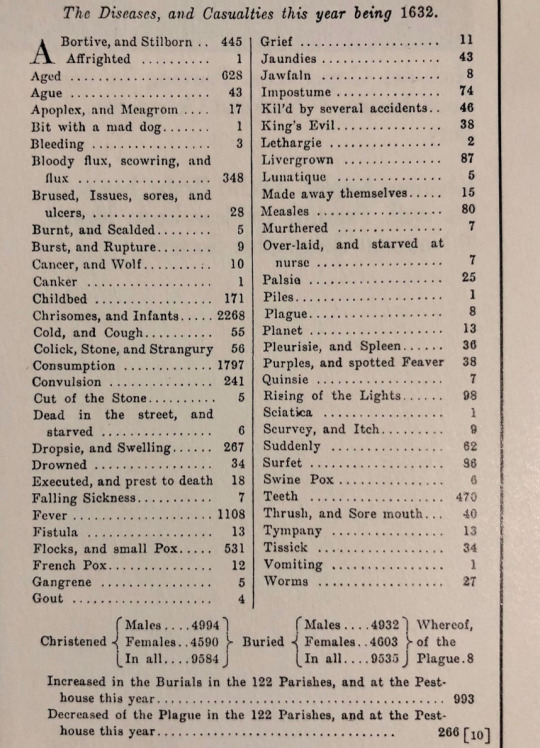
So, what was I saying about "making a lot of babies because they wore out quickly"? Over two thousand dead babies that year in London alone, not counting stillborn ones. Almost 1800 cases of tuberculosis, an illness pretty much unheard of in the modern world because we vaccinated the ever-coughing shit out of it. Over a thousand cases of fever, over half a thousand cases of pox and almost as many deaths by the notoriously neglected British teeth (read: abscesses, infections, inflammations, etcetera). In a city of about 250 thousand inhabitants.
Of course, any medical help was entirely private, small-scale and fully paid for by the patient - be it actual physicians, resident or itinerant barbers, herbalists or whoever had any medical knowledge or at least conviction of it. There was also a lot of mad science and outright quackery going on, not to mention treason - I do recall a case where the court physician of a Pomeranian duke was executed because somehow, strangely, the duchess' every pregnancy ended in stillbirth - until it was found out that he conspired with the neighboring state (I can't remember whether it was Denmark or one of the German states that had their distinct identities back then) to prevent the duke from siring a legitimate heir.
There were also no hospitals to speak of - what was called a "hospital" was, in fact, an almshouse - part asylum, part housing for the poor and elderly who had to express their gratitude by praying daily for the almshouse's founder good health and fortune. This also means that monks running those places didn't necessarily have any medical knowledge to speak of.
And since we're at embarrassing deaths, let's go back to the previous sections that regarded justice and law enforcement. You're probably thinking that in the Middle Ages, the lawmakers were going out of their way to have people hanged for just about anything and, well... that's bullshit. Not quite Victorian bullshit, as the stereotypical harsh law dubbed the "Bloody Code" was introduced during the reign of king George III - you know, the crazy one - although it has been entirely the doing of the British parliamentarians taking it out on the poor, as they're wont to do even now. While earlier penal codes like the Holy Roman Empire's Constitutio Criminalis Carolina did warrant the death penalty for grand theft, they also defined fairly high value of the stolen items - if I remember correctly, one golden ducat. The Bloody Code, however, aimed at a value about twenty times lower, and that would be 12 pence, or one shilling. Even with over two centuries of gradual depreciation of coin, that value was bubkes, and so the juries often undervalued the stolen goods, as not to hang everyone dragged before the court. For example, a sheep that was worth six shillings could be valued at ten pence, just so the thief could be hauled off to Australia instead and get pressed to work there. And while I know that other Tumblr users know the subject better than me, I learned long ago that being hanged was indeed embarrassing, certainly much more than having your head chopped off in public.
But, a lot of punishments weren't meant to be an embarrassing death or even maiming - if you ever saw the device known as the stocks, that one was meant mostly for embarrassment. Not only you had to be locked in them for several days, but also everyone around knew you and could give you a couple of harsh words or rotten produce. So your reputation was most probably dragged through the worst kind of shit by that, and if you kept going at it, you could be chased out of the area with the promise of a very embarrassing death if you returned, or just skip that and die a very embarrassing death. There were also other creative devices that made your life hard and made you look stupid, but I think I should leave that for some other time.
Mostly Rural and All-Natural
Now, let's focus on the post that started it all: the food. The Victorian age is well past the time when the majority of people started moving to cities, meaning that a lot of stuff had price tags and not many people could actually grow their own food. The Middle Ages, well, they were mostly rural and all-natural, like the title of this section says. This meant that, as the post about the food mentioned, people not only had a well-rounded diet that included eggs, milk and cheese, but also a large variety of vegetables and herbs, plus a lot of stuff found or caught in the wild - now, while venison and boar were the meat of kings and you would be royally fucked up for poaching those, nobody was particularly bothered about hares, for example. Also, when it came to clothing, homespun wool and linen were common materials and they could be dyed using various plants growing in the wild. The little display I linked should give you an idea of what was possible - and what, unsurprisingly, people refuse to acknowledge due to historical misconceptions.
This, of course, doesn't cover a lot of sumptuary laws that were common through history (and moreso in the Far East, particularly Japan). For example, the Ancient Romans had strict regulations as to who was allowed to wear silk clothing and clothing that was dyed purple, and multiple sumptuary laws in medieval Europe regulated the permission to wear certain furs, most importantly ermine that is now archetypical of royalty, and the amount of precious metals. So don't be surprised at the story I mentioned in the post about medieval executioners: I'm guessing that sumptuary laws were the reason why the infamously flamboyant clothes of a corrupt guildmaster were off-limits to the executioner who would be permitted to take them otherwise.
And Then What?
Okay, let's finish this. What's the deal with "boringly efficient" of the title? Well, for starters: the urbanization, industrialization and flight to cities that led to the simplification and unification of clothing, food etc. through large-scale production. That moved the burden of making clothes or growing food from single families to large enterprises, but also changed the whole structure of people's diets due to logistics. Our vegetables aren't the medieval vegetables, our dairy is not the medieval dairy and most importantly, our meat isn't the medieval meat, for better (no parasites like tapeworms) or worse (being pumped full of veterinary medicine, water and salts, for example). We also have access to incomparably more fabrics and dyes due to the progress of chemistry and textile industry. But still, those things are produced elsewhere, by someone else, and most of us just have to buy the same standard stuff from the store instead of creating bespoke outfits or at least hiring someone skilled to do it. Boring, right?
While luxury imports were well known since the ancient times, the formation of trading companies that at one point could rival governments and noble houses in their power did increase the range and volume of imports, and colonization of far-off regions also added a thing or two to that. And with the increase of volume, the prices tend to drop, so a lot of extraordinary stuff like all the exotic spices, now being grown in large-scale plantations, became boring. I mean, I can have cinnamon any day now - a lot of medieval nobles would die of bloody flux at the sight of such impertinent flamboyance.
Then, there's politics and sociology running forward full-blast ever since the late 18th century. The Enlightenment redefined a lot of fundamentals, like the concept of a nation divorced (or sometimes widowed) from the reigning monarch and his lineage. The necessity to include first the bourgeoisie and later even the peasants' representation in the government also required surveillance and maintaining order among them instead of just, well, keeping them around and sending the troops to beat the shit out of them if they became unruly. Hence the development of modern police forces, intelligence agencies and, on the other hand, social services to make sure the poor aren't wallowing in desperation and lawlessness (mostly). So most of the time, everything is peaceful and boring. Of course, there's still exploitation going on, but fortunately nowhere near the scale that caused large-scale uprisings in the medieval times (unless some government spectacularly fucks up and causes nationwide riots, which happened even in post-WW2 Europe) - mostly because of the necessity of representation I mentioned above.
Also, governments need people alive and working to pay taxes and, sometimes, wage wars. So they can't just ignore epidemics, dishonest food companies causing mass food poisoning by cutting costs, etcetera. Hence the rapid progress of medicine and incomparably more chill approach to law and its enforcement (mostly). Hard to believe the Medieval times were way crazier, right?
#history#History was written by the Victorians#Mike's Musings#TLDR#long reads#long post#LONGPOST IS LOOONG
3 notes
·
View notes
Text
Partial List of Royal Saints
Saint Abgar (died c. AD 50) - King of Edessa, first known Christian monarch
Saint Adelaide of Italy (931 - 999) - Holy Roman Empress as wife of Otto the Great
Saint Ælfgifu of Shaftesbury (died 944) - Queen of the English as wife of King Edmund I
Saint Æthelberht of Kent (c. 550 - 616) - King of Kent
Saint Æthelberht of East Anglia (died 794) - King of East Anglia
Saint Agnes of Bohemia (1211 - 1282) - Bohemian Princess, descendant of Saint Ludmila and Saint Wenceslaus, first cousin of Saint Elizabeth of Hungary
Saint Bertha of Kent (c. 565 - c. 601) - Frankish Princess and Queen of Kent as wife of Saint Æthelberht
Saint Canute (c. 1042 - 1086) - King of Denmark
Saint Canute Lavard (1096 - 1131) - Danish Prince
Saint Casimir Jagiellon (1458 - 1484) - Polish Prince
Saint Cormac (died 908) - King of Munster
Saint Clotilde (c. 474 - 545) - Queen of the Franks as wife of Clovis I
Saint Cunigunde of Luxembourg (c. 975 - 1033) - Holy Roman Empress as wife of Saint Henry II
Saint Edmund the Martyr (died 869) - King of East Anglia
Saint Edward the Confessor (c. 1003 - 1066) - King of England
Saint Edward the Martyr (c. 962 - 978) - King of the English
Saint Elesbaan (Kaleb of Axum) (6th century) - King of Axum
Saint Elizabeth of Hungary (1207 - 1231) - Princess of Hungary and Landgravine of Thuringia
Saint Elizabeth of Portugal (1271 - 1336) - Princess of Aragon and Queen Consort of Portugal
Saint Emeric (c. 1007 - 1031) - Prince of Hungary and son of Saint Stephen of Hungary
Saint Eric IX (died 1160) - King of Sweden
Saint Ferdinand (c. 1199 - 1252) - King of Castile and Toledo
Blessed Gisela of Hungary (c. 985 - 1065) - Queen Consort of Hungary as wife of Saint Stephen of Hungary
Saint Helena (c. 246 - c. 330) - Roman Empress and mother of Constantine the Great
Saint Henry II (973 - 1024) - Holy Roman Emperor
Saint Isabelle of France (1224 - 1270) - Princess of France and younger sister of Saint Louis IX
Saint Jadwiga (Hedwig) (c. 1373 - 1399) - Queen of Poland
Saint Joan of Valois (1464 - 1505) - French Princess and briefly Queen Consort as wife of Louis XII
Blessed Joanna of Portugal (1452 - 1490) - Portuguese princess who served as temporary regent for her father King Alfonso V
Blessed Karl of Austria (1887 - 1922) - Emperor of Austria, King of Hungary, King of Croatia, and King of Bohemia
Saint Kinga of Poland (1224 - 1292) - Hungarian Princess, wife of Bolesław V of Poland and niece of Saint Elizabeth of Hungary
Saint Ladislaus (c. 1040 - 1095) - King of Hungary and King of Croatia
Saint Louis IX (1214 - 1270) - King of France
Saint Ludmila (c. 860 - 921) - Czech Princess and grandmother of Saint Wenceslaus, Duke of Bohemia
Blessed Mafalda of Portugal (c. 1195 - 1256) - Portuguese Princess and Queen Consort of Castile, sister of Blessed Theresa of Portugal
Saint Margaret of Hungary (1242 - 1270) - Hungarian Princess, younger sister of Saint Kinga of Poland and niece of Saint Elizabeth of Hungary
Saint Margaret of Scotland (c. 1045 - 1093) - English Princess and Queen Consort of Scotland
Blessed Maria Cristina of Savoy (1812 - 1836) - Sardinian Princess and Queen Consort of the Two Sicilies
Saint Matilda of Ringelheim (c. 892 - 968) - Saxon noblewoman and Queen of East Francia as wife of Henry I
Saint Olaf (c. 995 - 1030) - King of Norway
Saint Olga of Kiev (c. 900 - 969) - Grand Princess of Kiev and regent for her son Sviatoslav I, grandmother of Saint Vladimir the Great
Saint Oswald (c. 604 - 642) - King of Northumbria
Saint Radegund (c. 520 - 587) - Thuringian Princess and Frankish Queen
Saint Sigismund of Burgundy (died 524) - King of the Burgundians
Saint Stephen of Hungary (c. 975 - 1038) - King of Hungary
Blessed Theresa of Portugal (1176 - 1250) - Portuguese Princess and Queen of León as wife of King Alfonso IX, sister of Blessed Mafalda
Saint Vladimir the Great (c. 958 - 1015) - Grand Prince of Kiev and grandson of Saint Olga of Kiev
32 notes
·
View notes
Photo

Leonidas the Fluffmonster with his vintage paperbacks of The World’s Best Horror Stories, edited by Karl Edward Wagner: VII (1980), IX (1981), XII (1984), XIV (1986). Gifts from fellow writers Cliff Biggers and Charles Rutledge. https://www.instagram.com/p/CqYXrQyuqUm/?igshid=NGJjMDIxMWI=
12 notes
·
View notes
Text

Mappenwerke und Illustrierte Bücher – Mappenwerk documenta IX
Karl and Faber
13 notes
·
View notes
Text

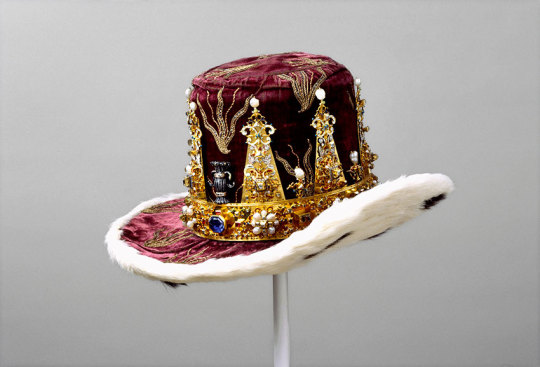

The Crown of the Swedish Heir / The Crown Princess' Crown
King Karl X Gustav's Crown of the Heir Apparent with its blue cap is the crown of Crown Princess Victoria. It was made in 1650 by Jurgen Dargeman in gold and set with pearls, diamonds, sapphires, and rubies.
The crown was made quickly for Queen Kristina's coronation in 1650. Only 17 days before the coronation, the Queen reminded the council that, according to tradition, the heir to the throne wore a unique costume consisting of a cloak, a crown and a cap. Jürgen Dargeman had just over a week to make a new crown for Karl (X) Gustav.
Because time was so short, Dargeman reused the crown created for Queen Kristina the Elder to wear for King Karl IX's coronation. He applied enamel decorations from the old crown and newly mounted stones to a freshly made plain crown ring with eight triangular points.
At the coronation, the crown is not worn directly on the head — instead, it is placed over a velvet hat, embroidered in gold and silver and edged with ermine.
The Crown of Sweden's Heir Apparent remains virtually unchanged to this day. The only alteration of any significance was carried out for the coronation of King Gustav III in 1772 when two of the lower sceptres were replaced with black enamelled corn sheaves, the symbol of the great Vasa dynasty.
King Gustaf V was the last to wear the crown (sans velvet hat), and it can now be seen at the Treasury at the Royal Palace of Stockholm, and the hat can be seen at the Royal Armoury.
Photos: The Royal Court of Sweden
#swedish royal family#crown princess victoria#king karl x gustav#swedish crowns#I felt like it was important to point out that the velvet hat isn't used anymore haha#swedish history#coronation#crown jewels#my upload
19 notes
·
View notes
Video
youtube
Classical Music for Halloween - from Halidon Music
Idk if this is Halloween per se, as it’s more dark autumnal vibes than spoopy. Like most of their videos, it’s 2.5 hours long. (I often find 3-6 hour mixes, rarely anything around 1-hour or less.) Lots of very good tunes, including a lot of stuff I love.
There’s a few that bug me. Gershwin’s prelude andante whatever is too modern-jazzy to me. (I first heard it played on hammered dulcimer, and it sounds even worse to me there.) Tired of “A Night on Bald Mountain”, especially for Halloween mixes. It’s good, but it’s overplayed.
I liked seeing “Palladio” by Karl Jenkins, aka the diamond song. The opening track stole my heart, showing this would be a good mix of stuff that’s not over-played. It feels like a prime example of what I expect from a “dark academia” mix. Really, a lot of this stuff is “new” to me, or at least something I’ve only heard in recent years.
It only took about half an hour to realize I wanted to share this mix.
Tracklist with timestamps copy-pasta’d from the video description:
0:00:00 Litvinovsky - Tales of the Magic Tree: IV. Spider Knows His Craft
0:03:39 Jenkins - Concerto Grosso for Strings "Palladio": I. Allegretto
0:06:12 Vivaldi - The Four Seasons, Concerto No. 4 in F minor, RV 297 "Winter": I. Allegro non molto
0:09:28 Vivaldi - The Four Seasons, Concerto No. 2 in G minor, RV 315 "Summer": III. Presto
0:12:08 Albéniz (arr. Naughtin) - Suite Española No. 1: V. Asturias - Leyenda
0:19:09 Händel - Suite No. 11 in D Minor, HWV 437: III. Sarabande
0:21:57 Haydn - Die Worte des Erlösers am Kreuze, Hob. XX:1: IX. Il Terremoto
0:23:43 Litvinovsky - Pelléas and Mélisande: XI. Duel. Épée de jalousie (Duel. Sword of jealousy)
0:26:28 Litvinovsky - Suite for Strings "Le Grand Cahier": X. L'Incendie
0:28:47 Litvinovsky - Suite for Strings "Le Grand Cahier": III. L'Hiver
0:32:23 Litvinovsky - Pelléas and Mélisande: IV. La grotte. Lac souterrain (Grotto. Underground lake)
0:36:24 Gershwin (arr. Naughtin) - 3 Preludes: No. 2, Andante con moto e poco rubato
Mozart - Requiem, K. 626:
0:40:28 Introitus. Requiem
0:45:52 Kyrie
0:48:33 Sequentia. Dies Irae
0:50:14 Verdi - Requiem: 2a. Dies Irae
0:52:24 Verdi - Requiem: 2f. Rex Tremendae
0:55:51 Mozart - Requiem in D Minor, K. 626: Lacrimosa (Live)
0:58:45 Barber - Adagio for Strings
1:04:23 Beethoven - Symphony No. 3 in E-Flat Major, Op. 55 "Eroica": II. Marcia funebre. Adagio assai (Live)
1:19:02 Beethoven - Symphony No. 7 in A Major, Op. 92: II. Allegretto
1:28:15 Orff/Killmayer - Carmina Burana: O Fortuna (Live)
1:30:55 Liszt - Mephisto Waltz No. 1, S. 514
1:42:49 Prokofiev - Ten Pieces for piano from the ballet “Romeo and Juliet”: No. 6, Montagues and Capulets (Dance of the Knights) (Arr. for Piano)
1:46:50 Mussorgsky - Night on Bald Mountain
Schubert (arr. Mahler) - String Quartet No. 14 in D Minor, D. 810 "Death and the Maiden":
1:58:06 I. Allegro
2:09:39 III. Scherzo. Allegro molto - Trio
2:13:53 IV. Presto - Prestissimo
2:22:58 Berlioz - Symphonie Fantastique, H 48: V. Songe d’une nuit de sabbat. Larghetto - Allegro (Live)
6 notes
·
View notes
Text
Events 6.12 (before 1940)
910 – Battle of Augsburg: The Hungarians defeat the East Frankish army under King Louis the Child, using the famous feigned retreat tactic of the nomadic warriors.
1206 – The Ghurid general Qutb ud-Din Aibak founds the Delhi Sultanate.
1240 – At the instigation of Louis IX of France, an inter-faith debate, known as the Disputation of Paris, starts between a Christian monk and four rabbis.
1381 – Peasants' Revolt: In England, rebels assemble at Blackheath, just outside London.
1418 – Armagnac–Burgundian Civil War: Parisians slaughter sympathizers of Bernard VII, Count of Armagnac, along with all prisoners, foreign bankers, and students and faculty of the College of Navarre.
1429 – Hundred Years' War: On the second day of the Battle of Jargeau, Joan of Arc leads the French army in their capture of the city and the English commander, William de la Pole, 1st Duke of Suffolk.
1550 – The city of Helsinki, Finland (belonging to Sweden at the time) is founded by King Gustav I of Sweden.
1643 – The Westminster Assembly is convened by the Parliament of England, without the assent of Charles I, in order to restructure the Church of England.
1653 – First Anglo-Dutch War: The Battle of the Gabbard begins, lasting until the following day.
1665 – Thomas Willett is appointed the first mayor of New York City.
1758 – French and Indian War: Siege of Louisbourg: James Wolfe's attack at Louisbourg, Nova Scotia, commences.
1772 – French explorer Marc-Joseph Marion du Fresne and 25 of his men are killed by Māori in New Zealand.
1775 – American War of Independence: British general Thomas Gage declares martial law in Massachusetts. The British offer a pardon to all colonists who lay down their arms. There would be only two exceptions to the amnesty: Samuel Adams and John Hancock, if captured, were to be hanged.
1776 – The Virginia Declaration of Rights is adopted.
1798 – Irish Rebellion of 1798: Battle of Ballynahinch.
1817 – The earliest form of bicycle, the dandy horse, is driven by Karl von Drais.
1821 – Badi VII, king of Sennar, surrenders his throne and realm to Isma'il Pasha, general of the Ottoman Empire, ending the existence of that Sudanese kingdom.
1830 – Beginning of the Invasion of Algiers: Thirty-four thousand French soldiers land 27 kilometers west of Algiers, at Sidi Ferruch.
1864 – American Civil War, Overland Campaign: Battle of Cold Harbor: Ulysses S. Grant gives the Confederate forces under Robert E. Lee a victory when he pulls his Union troops from their position at Cold Harbor, Virginia and moves south.
1898 – Philippine Declaration of Independence: General Emilio Aguinaldo declares the Philippines' independence from Spain.
1899 – New Richmond tornado: The ninth deadliest tornado in U.S. history kills 117 people and injures around 200.
1900 – The Reichstag approves new legislation continuing Germany's naval expansion program, providing for construction of 38 battleships over a 20-year period. Germany's fleet would be the largest in the world.
1914 – Massacre of Phocaea: Turkish irregulars slaughter 50 to 100 Greeks and expel thousands of others in an ethnic cleansing operation in the Ottoman Empire.
1921 – Mikhail Tukhachevsky orders the use of chemical weapons against the Tambov Rebellion, bringing an end to the peasant uprising.
1935 – A ceasefire is negotiated between Bolivia and Paraguay, ending the Chaco War.
1939 – Shooting begins on Paramount Pictures' Dr. Cyclops, the first horror film photographed in three-strip Technicolor.
1939 – The Baseball Hall of Fame opens in Cooperstown, New York.
0 notes
Text
So black men have had great opportunities for great education and black Women have had the same great opportunity. For being only twelve percent of the population they receive an incredible amount of athletic scholarships.... The sad thing is they haven't focused on their education.... This is why I don't want the n f l and the n b a taking players early... And this is why they must be near completion of their degree and once they get into the NBA and n, f, l, they must finish their degree. They must finish their degree within the first year of entering the NB.A or n f l. This is the same with professional baseball and hockey. Those teams must require their athletes to finish their college degree. This is why a lot of these athletes end up in very bad positions especially if they get injured and can't play in those sports anymore. They don't have the ability to go behind the scenes and do other things like karl swerberg did with the cubs.. He was able to do all kinds of statistical recordings of the pictures and so that he could go behind the scenes and help the team as an analyst. But they need to prepare themselves for a career.Yeah they need to have an exit strategy for all their players. They need to prepare them for life after the sport whether they get injured or retire or no longer make the team.... They must have an ability for these players to move on to different careers, whether within the sport or working for a vendor for the sport or moving into a non related industry. 🤔 Just like Hollywood needs to do. These industries need to prepare their people for life afterwards, or you get Danny Bonaducci. 🤔 They feel lost and they are lost and they get hooked to drugs and all kinds of bad things happen with them.... So this is with models and every one of these industries. They need to prepare people for transition, just like CFP's and CFA's need the prepare people for transition. So part of it the NCA needs to do this with people who don't make it to the pro. Level. They need to do some type of planning for them to move on into different industries.... You can be an analyst with a CF.A and you played college basketball and you go and analyze the industry. So you can analyze companies that are involved in sports or you can analyze the industry in general .... You can even open up a mutual fund that only invest in industries related to sports.... you can create a sports related index... So the sad point that's happened in the black community with the hundred and seven all black colleges and everything is they truly didn't take advantage of the opportunities that were given to them......
Black men are the majority of scholarship football and basketball players, and Black women are 42 percent of scholarship basketball players. But white women are by far the single-largest recipient of all sports athletic aid in Division I.Dec 23, 2022
https://prospect.org › education
Black College Students: An Endangered Species, Unless ...
According to prospect.org, 42% of college basketball players receive scholarships, and 41% of women's basketball players in 2020-21 were Black. However, white women are the largest recipients of all sports athletic aid in Division I. For example, in 2022, 69% of female student athletes in the United States were white, while 8.9% were African.

The American Prospect
Black College Students: An Endangered Species, Unless They Play ...
Dec 23, 2022 — Black men are the majority of scholarship football and basketball players, and Black women are 42 percent of scholarship basketball players. But white women are by far the single-largest recipient of all sports athletic aid in Division I. A 2019 analysis by the Center for American Progress (CAP) noted that many of ...

538 — Election Polls, Politics, and Analysis - ABC News
Title IX Didn't Guarantee Black Women An Equal Playing Field
Jun 22, 2022 — In 2020-21, 41 percent of women's basketball and 23 percent of women's track and field athletes were Black. 2. Again, limited to athletes ...

statista.com
Share of NCAA female athletes in the U.S. 2022, by ethnicity - Statista
Mar 27, 2023 — College sports are very popular in the United Stated and the championships are organized in divisions around different sports sanctioned mainly by the NCAA, the largest college sports organization. In 2022, almost 69 percent of female student athletes in United States were white, while 8.9 percent were African ...
Black men are the majority of scholarship football and basketball players, making up 55.9% of men's basketball players in the Power Five. However, the percentage of Black athletes among the nation's major-college scholarship athletes is far greater than the percentage of Black students among those schools' overall student populations.
So this has been the problem and this is where what did rainbow push do or any of these the urban league.... There's all these black organizations and they didn't reduce the dropout rates. They didn't emphasize completing college or getting advanced degrees.....
All these industries do a very bad job of transitioning their people.... I started working with transition firms in 2001. Below government can get an idea of what's happening in industry.... I am absolutely against the LGBTQ...... We need to put in place an exit strategy for them turning straight......
Human Rights Campaign
https://www.hrc.org › resources
Corporate Equality Index 2023-2024
As the national benchmarking tool measuring policies, practices and benefits pertinent to lesbian, gay, bisexual, transgender and queer
No matter if a TV show is ending, these are the top transition firms that allow people to move either within an industry or between industries. These industries and associations should be helping people with transition...
What Are the Top Outplacement Firms?
Lee Hecht Harrison. Lee Hecht Harrison (LHH) is one of the largest outplacement firms in the US and around the globe. ...
Right Management. ...
Global Outplacement Alliance. ...
Mercer. ...
Randstad RiseSmart. ...
Career Partners International.
Mar 20, 2024
https://careerminds.com › Blog
Top Outplacement Firms: A List for Buyers of ... - Careerminds
U.S. Department of Labor (.gov)
https://www.dol.gov › termination
Plant Closings and Layoffs
WARN makes certain exceptions to the requirements when layoffs occur due to unforeseeable business circumstances, faltering
0 notes